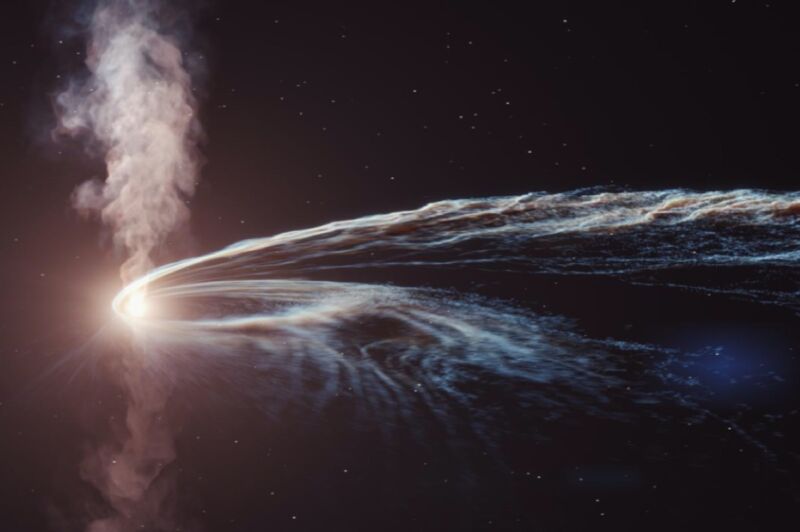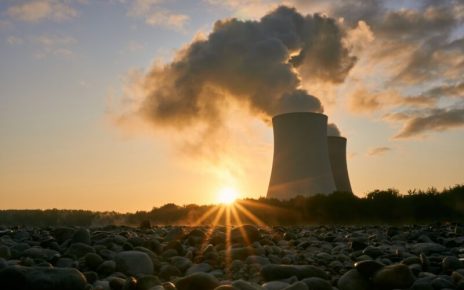
Enlarge / The remains of a shredded star formed an accretion disk around the black hole whose powerful tidal forces ripped it apart. This created a cosmic particle accelerator spewing out fast subatomic particles. (credit: DESY, Science Communication Lab)
Roughly 700 million years ago, a tiny subatomic particle was born in a galaxy far, far away, and began its journey across the vast expanses of our universe. That neutrino finally reached the Earth’s South Pole last October, setting off detectors buried deep beneath the Antarctic ice. A few months earlier, a telescope in California had recorded a bright glow emanating from the friction of that same distant galaxy—evidence of a so-called “tidal disruption event” (TDE), most likely the result of a star being shredded by a supermassive black hole.
According to two new papers (here and here) published in the journal Nature Astronomy, that lone neutrino was likely born from the TDE, which serves as a cosmic-scale particle accelerator near the center of the distant galaxy, spewing out high-energy subatomic particles as the star’s matter is consumed by the black hole. This finding also sheds light on the origin of ultrahigh-energy cosmic rays, a question that has puzzled astronomers for decades.
“The origin of cosmic high-energy neutrinos is unknown, primarily because they are notoriously hard to pin down,” said co-author Sjoert van Velzen, a postdoc at New York University at the time of the discovery. “This result would be only the second time high-energy neutrinos have been traced back to their source.”





